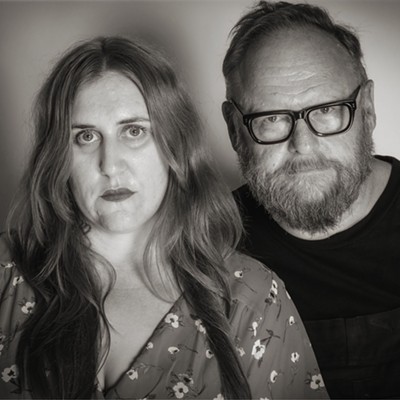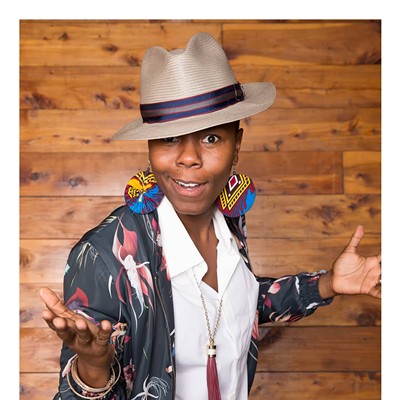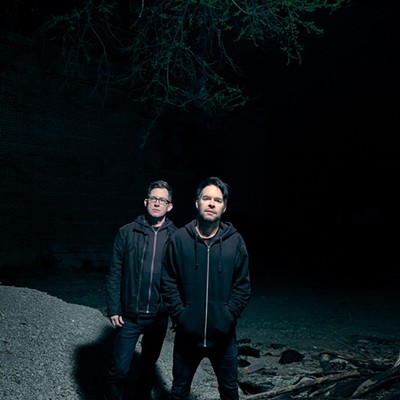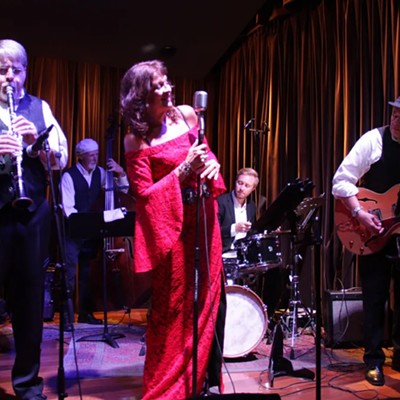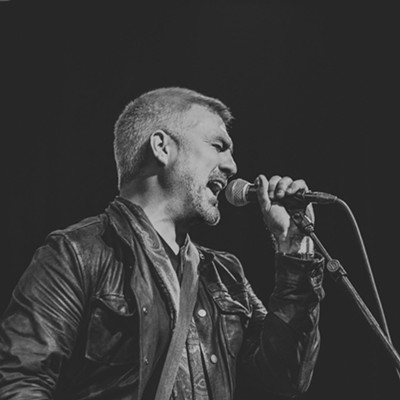Much has been written about the beauty of the California coastline. It has starring roles in plenty of songs and albums. Mountains giving way to oceans, the historical promises of bounty and salvation, the constant threat of earthquakes—it all makes for expressions charged with awe.
For Santa Barbara's Gardens and Villa, the experience of living near the coast is inseparable from the way their music sounds: natural and cultivated, nostalgic and refreshing, in pop with an '80s tinge.
"There's a ton of natural beauty in Santa Barbara," explained Gardens and Villa keyboardist Adam Rasmussen. "It's one of my favorite coastlines on the entire West Coast, between Point Conception and down to Carpinteria, and the way that it sits against the mountains, and the fog comes in. ... It's kind of dreamlike, in a way."
Those dreamlike qualities show up on the band's debut self-titled album—which will be released on July 5 on Secretly Canadian—in the form of sun-soaked synths, misty vocal melodies and airy flutes. "I think a lot of the colors in the sky, and the way the fog comes in like that, and having the ocean there, and having a small community of musicians who share a lot of time together, tends to wash the album with a sense of nostalgia or dreams," Rasmussen continued.
Gardens and Villa echoes new wave, prog rock and even, momentarily, the Beatles. ("Sunday Morning" is a more-optimistic, lazier "Eleanor Rigby.") The nostalgic sense also comes directly from Dusty Ineman and Rasmussen's synths and keyboards, and from Chris Lynch's flute.
The first time Lynch brought in the flute, explained Rasmussen, "We said, 'Oh my god, that's such a beautiful texture.' It gives it an ancient feel without being too obvious." On "Orange Blossoms," Lynch's flute soars quietly over the chorus and funk bass line like the ghost of Simon and Garfunkel's "El Condor Pasa."
But Gardens and Villa weren't always a pop band sea-sprayed with synths and flutes. Before they became Gardens and Villa, three of the five members were in a post-punk band called Ave Caesar. Rasmussen met Lynch in choir in college—"He was a tenor; I was a baritone," said Rasmussen—and another college friend, Levi Hayden, joined them on drums. They all moved into a house together, and turned the garage into a jam space.
"After four years, it started to become something else entirely," explained Rasmussen.
The band decided to take a break. Lynch hitchhiked through the Northwest; Hayden worked on his drumming; and Rasmussen took sound-engineering classes.
Said Rasmussen, "When Chris got back to town, he showed us a couple of jams he wrote on the road, and we shared some of the material we'd been working on. We realized that we really needed to start jamming again. It felt really fresh, and we were ready to take it in a new direction."
That new direction, said Rasmussen, involved including more musical styles. "Adding Shane (McKillop) to the mix on the bass really helped, because he had a whole new texture to work with, which was rock and funk and jazz and dance and folk. We morphed out of the post-punk thing into more of an alt-folk or dirty type of folk thing, and once we started adding the bass on top, it became what it is now."
Continued Rasmussen, "As we came together, we exposed everyone's background. Levi used to play jazz and, like, black metal, and Chris used to be in punk bands and hard-core bands, and I used to play a ton of classical—that's what I've done since I was a kid. So for the Gardens thing, it was kind of no-holds-barred."
Instead of writing post-punk songs with a classical approach—with movements and no lyrics—the band began adding in standard pop-song structures with lyrics.
"Chris has a beautiful voice," Rasmussen pointed out, "so once we started incorporating lyrics and words rather than just colors and sounds, the organizing process was a mesh between where we were coming from before, and what we know from all our influences."
Kind of like an actual garden, composed of a variety of plants, organized in somewhat standard ways, but with individual flair and creativity—hence the word "garden" in the name?
Definitely, said Rasmussen. "Once everyone did sabbatical, and we came back together, one of the first things we did was plant a massive garden in the backyard," he said. "Seeing the land change from how the landscape looked when we were Ave Caesar, which was loosely landscaped and kind of wild and out of control, to giving it some order, really influenced everyone's internal order within the house. It inspired us in a lot of ways." (The "Villa" part of the name comes from the street they all live on.)
With a little cultivation of their own musical backgrounds, Gardens and Villa grew music that was far more lush than when they tried to work against the constraints of pop-song structures. Ave Caesar was around for four years; Gardens and Villa has only been in existence for about two years, and in that time, they've recorded their self-titled album with Richard Swift (an accomplished recording artist who has also produced albums for Damien Jurado and Laetitia Sadier) and signed with Secretly Canadian. They're now in the midst of a tour that brings them to Tucson twice in the next week.
"It's been really beautiful, a dream come true, to meet new people and see how powerful music really is," said Rasmussen.

